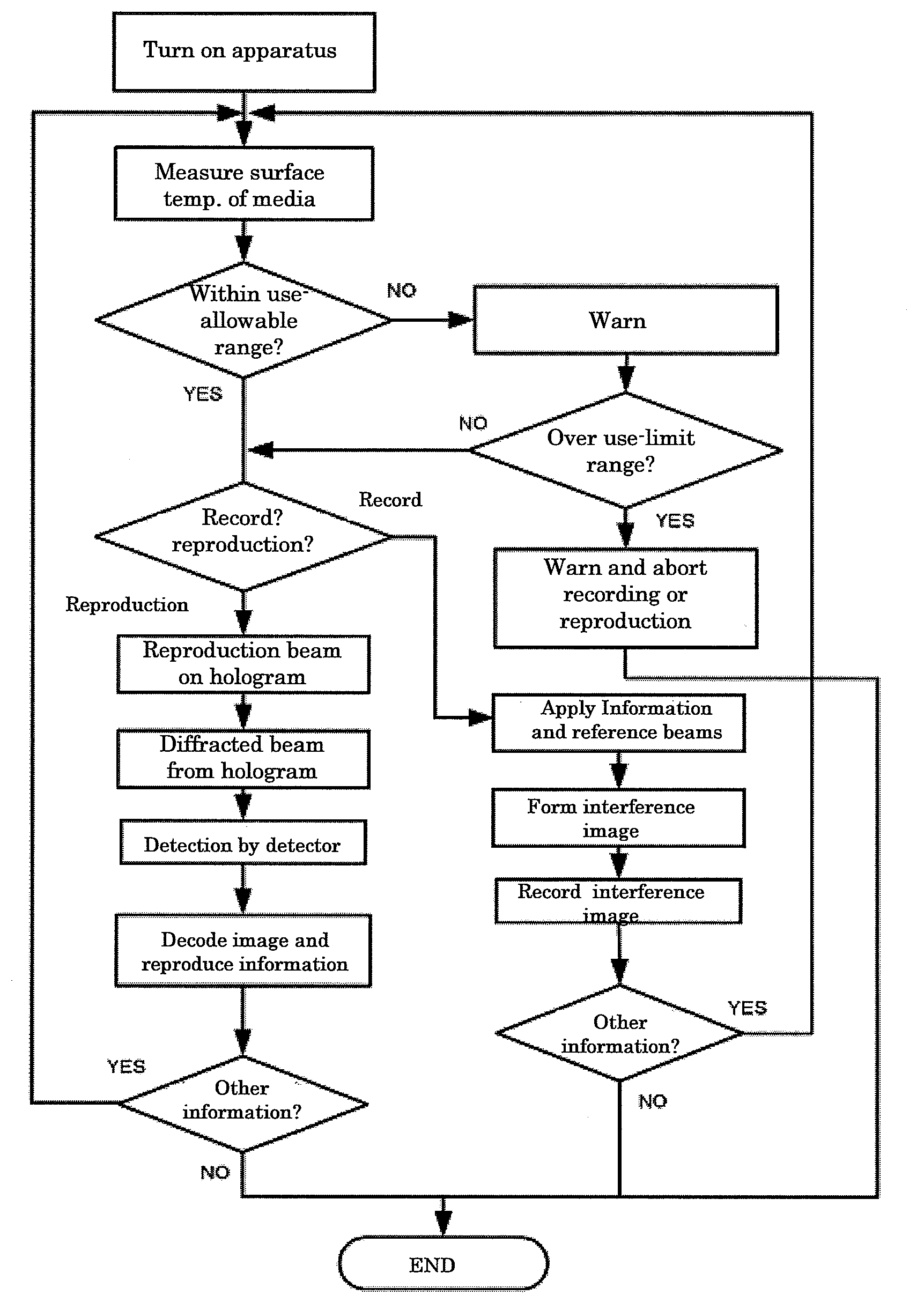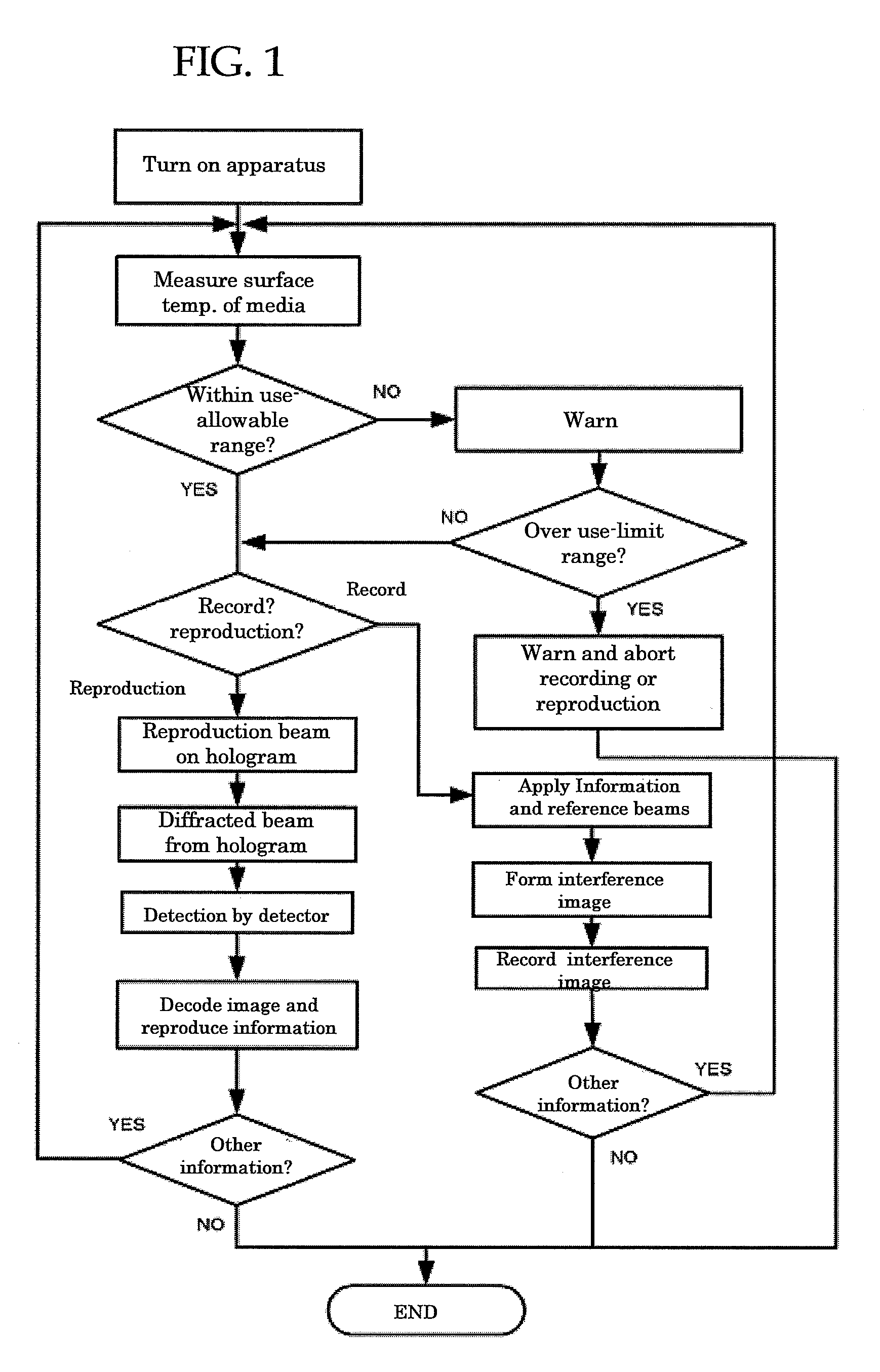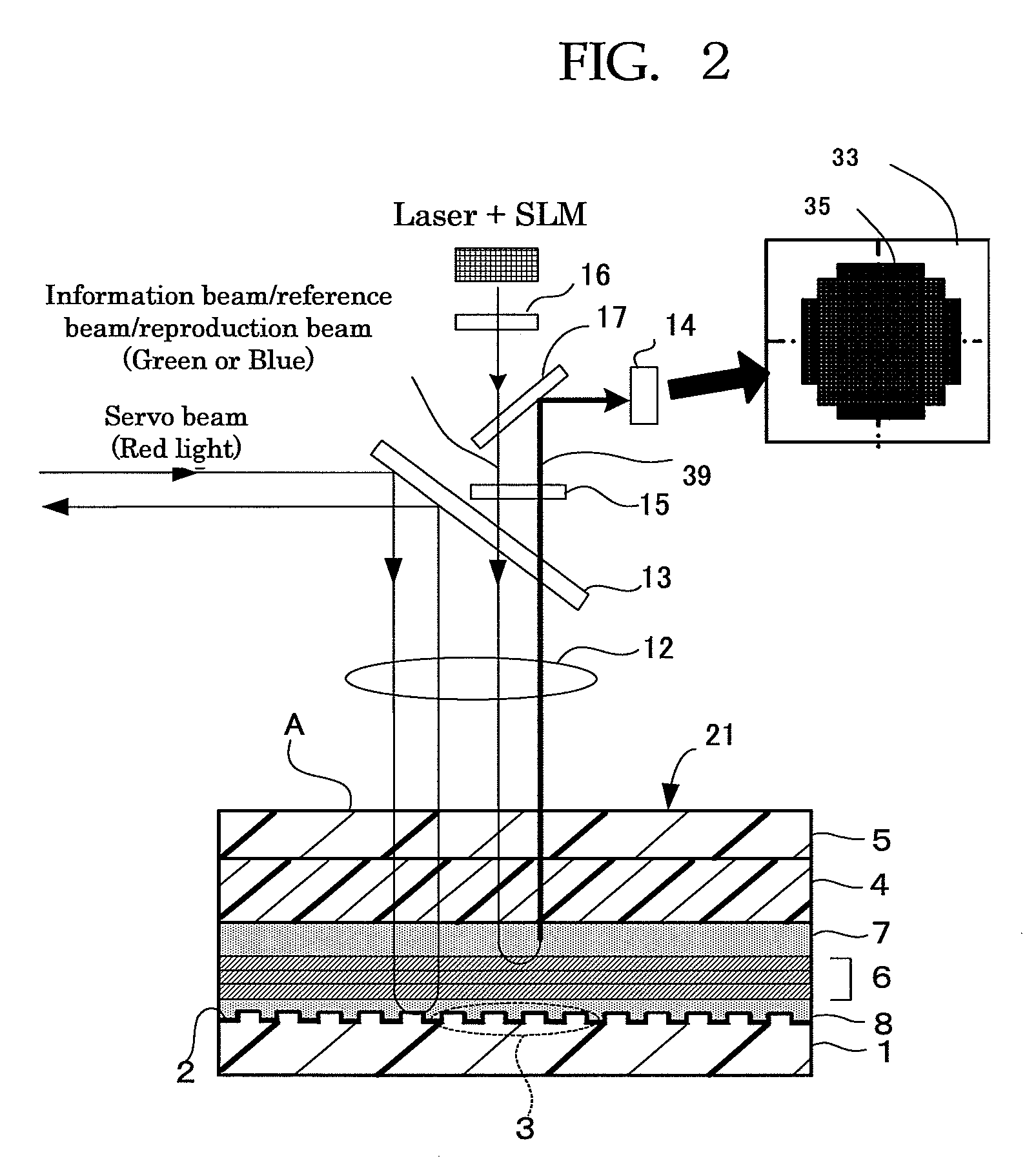Optical Recording/Reproducing Apparatus, Optical Recording Method, and Optical Reproduction Method
- Summary
- Abstract
- Description
- Claims
- Application Information
AI Technical Summary
Benefits of technology
Problems solved by technology
Method used
Image
Examples
specific example 1
of Optical Recording Medium
[0395]FIGS. 18 and 20 are schematic cross-sectional views showing the structure of an optical recording medium of the specific example 1 of the present invention. In the optical recording medium 21 according to this specific example 1 servo pit patterns 3 are formed on a second substrate 1 made of polycarbonate resin or glass, and the serve pit patterns 3 are coated with Al, Au, Pt or the like to form a reflective film 2. Although the servo pit patterns 3 are shown to be formed on the entire surface of the second substrate 1 in FIG. 20, it may be formed on the second substrate 1 periodically. In addition, the height of the servo pit patterns 3 are generally 1,750 angstrom (175 nm), far smaller than those of the other layers, including substrates.
[0396]A first gap layer 8 is formed by applying a material such as a UV curable resin over the reflective film 2 of the second substrate 1 by spin coating or the like. The first gap layer 8 protects the reflective ...
specific example 2
Of Optical Recording Medium
[0403]FIG. 21 is a schematic cross sectional view of the structure of an optical recording medium in specific example 2. The optical recording medium 22 is identical to that of specific example 1 except for the structure of the filter layer 6.
[0404]In FIG. 21, the filter layer 6 transmits therein only a red light beam and reflects light beams of the other colors. Thus, the information and reference beams for recording and reproduction do not pass through the filter layer 6 because they are green or blue light, and never reach the reflective film 2, becoming returning beams emitting from light entrance / exit surface A.
[0405]This filter layer 6 is a laminate formed of a dielectric material-deposited layer consisting of 7 thin dielectric films with different refractive indices provided on a coloring material-containing layer. The filter layer 6 composed of the coloring material-containing layer and dielectric material-deposited layer may be directly formed on ...
example 1
Preparation of Optical Recording Medium>
[0410]An optical recording medium of Example 1 was prepared by depositing on a first substrate, in sequence, a recording layer, a second gap layer, a filter layer, a first gap layer, and a second substrate in a manner described below. The filter layer was prepared by depositing a film-shaped filter prepared as follows.
Preparation of Filter Layer
—Formation of Coloring Material-Containing Layer—
[0411]At first, polyvinyl alcohol (MP 203, from Kuraray Co., Ltd.) was applied on a polycarbonate film of 100 μm thickness (Iupilon, from Mitsubishi Gas Chemical Company Inc.) to a thickness of 1 μm to prepare a base film.
[0412]Next, coating solution for coloring material-containing layer containing the following components was prepared with a normal method.
[0413]Red pigment (C. I. Pigment Red 9) . . . 10 parts by mass
[0414]Binder resin (polyvinyl alcohol resin, from Kuraray Co., Ltd.) . . . 100 parts by mass
[0415]Water . . . 700 parts by mass
[0416]The co...
PUM
 Login to View More
Login to View More Abstract
Description
Claims
Application Information
 Login to View More
Login to View More - R&D
- Intellectual Property
- Life Sciences
- Materials
- Tech Scout
- Unparalleled Data Quality
- Higher Quality Content
- 60% Fewer Hallucinations
Browse by: Latest US Patents, China's latest patents, Technical Efficacy Thesaurus, Application Domain, Technology Topic, Popular Technical Reports.
© 2025 PatSnap. All rights reserved.Legal|Privacy policy|Modern Slavery Act Transparency Statement|Sitemap|About US| Contact US: help@patsnap.com



